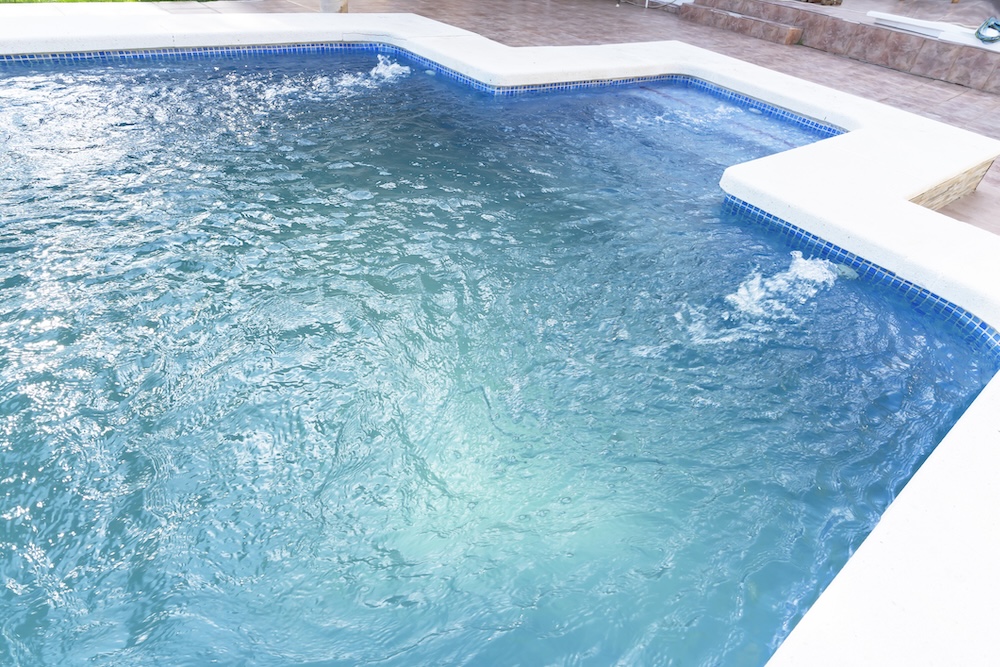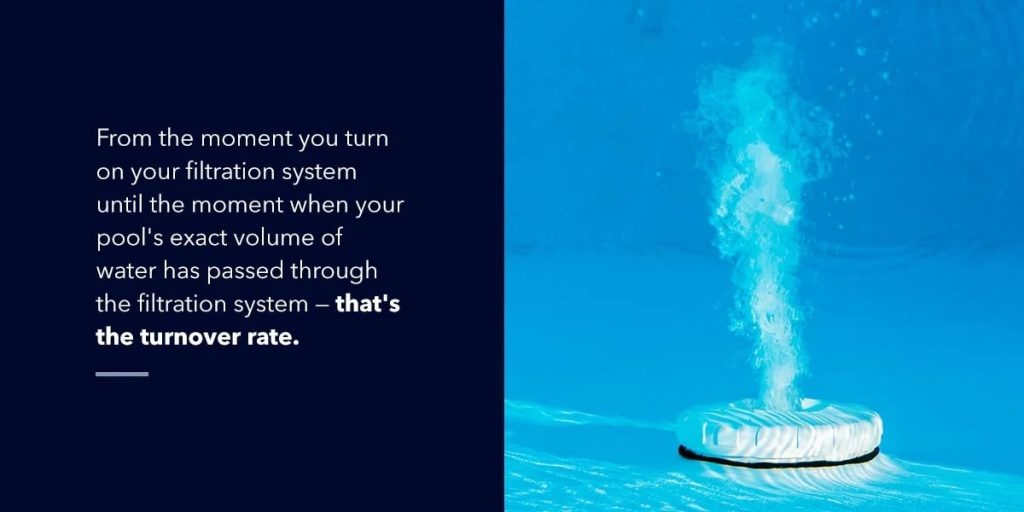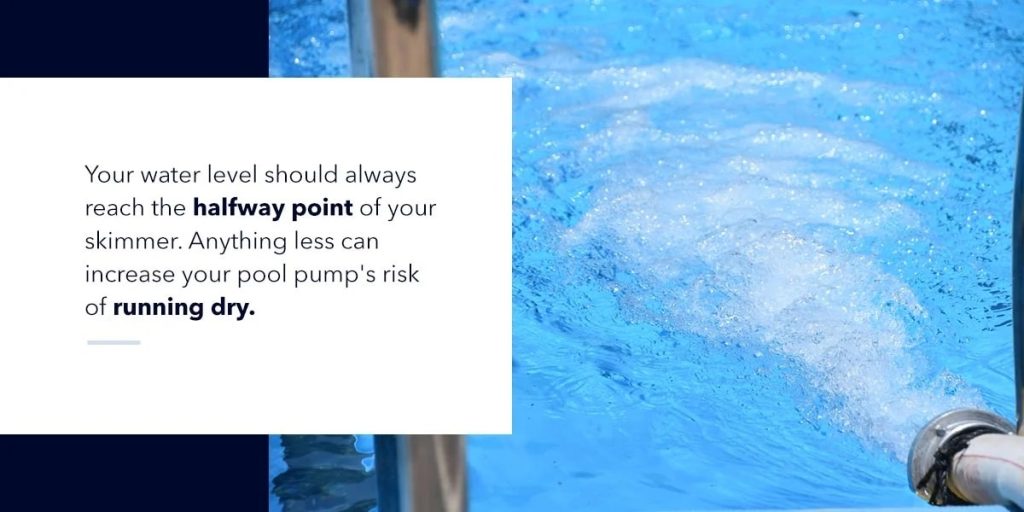

Maintenance and care are essential when you own a pool. But one thing every pool owner must learn about pool maintenance is that precision is critical. A lack of precision in your pool care routine can lead to uninviting water, dirty pool surfaces and more time and money spent trying to get your pool back to the way it should be.
This article will help you understand the importance of precise pool water circulation and turnover rate for your pool. You’ll learn how to increase pool circulation, how long to circulate pool water, how many times a day a pool should turnover and so much more. With this information, you’ll be better able to keep your pool in the best condition possible all season long.
To understand the importance of pool circulation, you first need to know what it is exactly. Pool circulation is the intentional movement of your pool’s water to help keep the water clean and safe to swim in. Just like your heart pumps your blood throughout your body, your pool pump moves water throughout the pool and the entire water circulation system. This ensures every bit of pool water moves throughout the system to stay as clean as possible with a proper chemical and pH balance.
Pool circulation is important because movement is essential for keeping your pool’s water and the surfaces it contacts clean. Consider a stream in the woods. Often, you can see the bottom of moving streams as the water is crystal clear. Without outside factors like water contamination or litter, moving streams are usually clean and smooth. This is because the water consistently moves through the area, stopping critters and sediment from becoming permanent additions to the location.
Your pool is an isolated body of water with no natural circulation. If your pool pump is not circulating water, your pool water will remain still. Still pool water can lead to various risks, including a more noticeable presence of dirt and sedimentation. In the worst-case scenarios, still pool water can contribute to algae growth and mosquito infestation, both of which can lead to severe health risks and discomfort.
In short, if you want a clean, safe pool that looks inviting on those hot summer days, then you need proper pool circulation. Pool circulation ensures pool chemicals are evenly distributed throughout the water so it’s ready for your next swim. But like all pool care, you need to be precise with your pool circulation to get the best results without spending too much money on your energy bills.

The pool turnover rate is how long it takes for all your pool’s water to circulate through the filtration system. Movement in your pool water is a good start to keeping it cleaner, but you want every last drop of water to pass through your filtration system to ensure the cleanest, healthiest water possible. From the moment you turn on your filtration system until the moment when your pool’s exact volume of water has passed through the filtration system — that’s the turnover rate.
Your pool turnover rate should be as precise as possible to achieve the best results. For this, you need to know the formula for calculating your pool turnover rate, which is the volume of water in your pool divided by your system’s flow rate. This is the foundation for knowing how your pool circulation system is performing and whether you need to make any adjustments to achieve an ideal turnover rate.
Here are the three steps to using this formula to calculate your flow rate:
Now that you know how to calculate your pool’s turnover rate, you may be wondering if there is an ideal turnover time for your pool. Should you have a slower or faster turnover rate? Will a specific turnover rate have better results for your pool than another?
State and local governments have different codes and regulations in place regarding pool turnover rates to ensure safe and healthy conditions in communities with pool owners and public pools. Most industry standards suggest a minimum turnover rate of around six hours. You should also plan to turn over your pool water at least twice in a 24-hour period for the best results.
If you can achieve these benchmarks, then you’ll be well on your way toward cleaner pool water that is always ready for your next swimming session.

Ensuring proper pool circulation can be a hassle. It takes time out of your day to start and stop your circulation system, and it also increases your energy bills. Yet it is still essential to achieving a cleaner, longer-lasting pool, which makes it financially worth it in the long run.
If you’re wondering how you can achieve more consistent pool circulation and an improved turnover rate, you’re in luck. You can take several actions to improve your pool circulation, so you should be sure to add them to your pool care routine.
Here are five ways you can improve your swimming pool circulation.
Your pool pump is the beating heart of your pool’s circulation system. If your pool pump is too small, it will struggle to provide adequate circulation and turnover rates. If it’s too large, you may be paying more in energy costs than necessary for your needs. The right size pool pump for your needs depends on your pool’s size and how much water you’re circulating.
To do this, you’ll need to go back to your pool turnover rate formula. If you know the volume of your pool and your target turnover rate, then you can do some reverse math to find the flow rate needed to achieve your desired turnover rate.
Here’s how this works. Say you have a pool with a volume of 300 cubic meters. If your desired turnover rate is six hours, then you would need a pool pump with a flow rate of 50 cubic meters per hour. Of course, you can choose a pool pump with a faster flow rate to achieve greater efficiency, but with this math, you can at least ensure you’re reaching that targeted six-hour turnover time.
Even if you have the right size pool pump, you may find your flow rate decreasing in some circumstances. This may be a result of a dirty pool pump and filtration system. Clean the various components of your system, and your flow pool pump should return to optimum efficiency.
Keep your pool pump and filtration system clean to avoid seeing a drop in your circulation system’s efficiency. Here are some steps you can take to ensure your filtration system and pool pump stay clean and functional:
Your pool pump and circulation system do a lot of work to keep your pool clean, but you also have a part to play. Here are some important pool care chores you should do regularly to ensure an efficient circulation system:

Once you fill up your pool to the correct level, you must actively maintain that level or it will begin to fall. This is especially true during the hot summer when the chance for evaporation is at its highest. Heavy pool use also contributes to water loss, as more people will be jumping in and splashing the water over the edges of the pool.
Your best course of action is to top off your water levels with water from your garden hose every time you do your weekly pool maintenance chores. This will ensure your water stays at the optimum level every week.
Your water level should always reach the halfway point of your skimmer. Anything less can increase your pool pump’s risk of running dry. This can lead to high energy bills, damage and costly repairs. Be sure to maintain a proper water level so your pool circulation system can work as efficiently as possible all pool season long.
One of the best steps you can take to improve your swimming pool circulation is to hire a professional. A professional pool maintenance technician will take all the necessary steps to keep your filtration system running as efficiently as possible by doing the following:
When a professional handles your pool maintenance needs, you’ll get much more than increased pool circulation efficiency. You’ll get the peace of mind that your pool is being taken care of in the best way possible. You can know that your pool is always ready for your next swimming session or pool party. And best of all, you can avoid doing all the manual labor, cleaning and chemical calculations. Let the professionals handle that instead.
Lotus Pools is ready to handle all your inground pool maintenance needs in the Greater Chicagoland Area. Whether you need a pool pump repair or want to schedule a general service call to learn more about the condition of your pool, we will be happy to serve you.
Contact us online today to take the next step toward a more efficient pool circulation system!